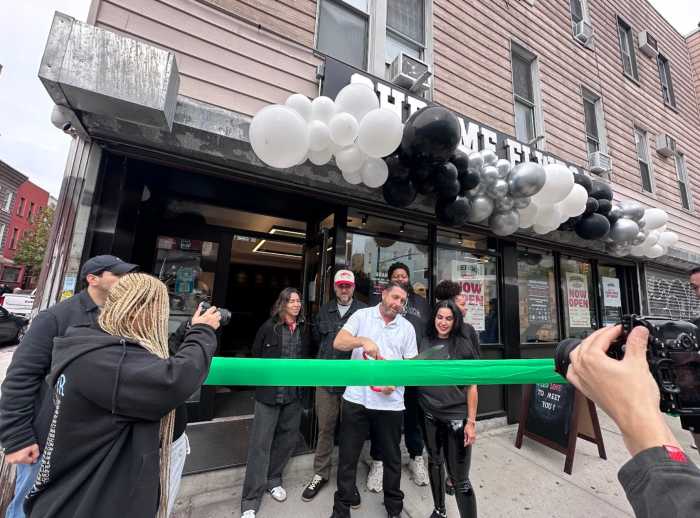As congressmembers lobby the Environmental Protection Agency to declare Newtown Creek a Superfund site, Riverkeeper keeps on chugging up the river, raising awareness in the community about oil and sewage seeping into the river, polluting the waterway.
“Anytime it rains significantly, too much water goes into the creek,” said Basil Seggos, chief investigator and Hudson River program director at Riverkeeper, on a recent tour of the creek. “Newtown Creek gets 10 percent of the city’s combined sewer overflow volume.”
Seggos and other Riverkeeper staff lead boat tours up the creek twice a month to conduct samples on water quality and to monitor the seepage of oil into the waterway. Last week, Riverkeeper announced the appointment of a new Brownfield Opportunity Area (BOA) director, Tawkiyah Jordan, who will assess redevelopment opportunities for contaminated sites along creek and examine the watershed to improve the environmental condition of the water and the land that surrounds it.
The $625,000 grant, the largest BOA grant in the state, was awarded to Riverkeeper and the Greenpoint Manufacturing Design Center (GMDC) in March 2008 by the New York State Department of State and the Department of Environmental Conservation (DEC). GMDC will oversee the grant and the new BOA director.
Seggos and John Liscomb, who pilots the Riverkeeper boat and conducts water samples to determine the level of bacteria in the waterway, were pleased with the hiring of the new BOA director. Along with another DEC federal forestry grant worth $362,000 designed to test models for reducing combined sewer overflow, and the recent push by Congress to secure Superfund designation for the creek, Riverkeeper has been making small but significant steps this year to remediate pollution in Greenpoint.
“The Brownfield grant won’t affect the oil spill. That’s being dealt with in the courts,” Seggos said, referring to a lawsuit Riverkeeper brought against ExxonMobil. “We have worked hard for a number of years and we have the support of the state now. We always try to negotiate out of court. Litigation is always a last choice.”
The case is still in the discovery phase, as attorneys in the state attorney general’s office are gathering evidence and pouring over thousands of pages of legal documents. Seggos believes the discovery proceedings could last another year and half before the case goes to trial or an agreement with ExonnMobil and other plaintiffs is reached.
“This is the most oil we’ve seen on the surface in a long time,” Seggos said.
Along the creek, Seggos pointed out different embankments that had been stained black by the seepage of oil into the water.
“The boom that Exxon and Chevron put in rises with the tide and oil seeps through, leaving a residual at the wall,” Seggos said of the barrier across the waterway used for oil spill contamination. “If you have to put a boom in place, it’s a serious problem.”
The boat sailed by Phelps Dodge, the site of a former copper smelting plant where Congressman Anthony Weiner requested the Environmental Protection Agency conduct environmental tests to determine whether the creek merits Superfund designation.
“You really need to have all levels of government involved in something this big,” Seggos said.
For now, Riverkeeper remains concerned about the dangerously low levels of oxygen present at the source of the creek, just beyond the Keyspan pipeline, and the high levels of bacteria they have found in a series of tests.
“What we’re finding on the whole river is a tremendous variability in space and time from swimmable water quality to beach closure law,” Liscomb said.
In dry weather, the water can be relatively clean, though after a storm event, raw sewage from the nearby watershed flows into the creek, creating algae blooms and increasing bacteria to uncountable levels.
“You fix that by greening the city and using rainwater more effectively,” Seggos said.
























